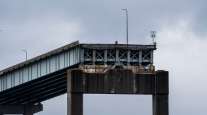Senior Reporter
NTSB Approves Safety Regulations at I-5 Bridge Hearing
The National Transportation Safety Board on July 15 said poor preparation on the part of a trucking company, a distracted pilot escort driver and a weak permitting process by Washington transportation officials resulted in last year’s collapse of the Interstate 5 bridge.
At a hearing in Washington, D.C., NTSB’s four members voted unanimously to approve several safety recommendations, such as banning non-emergency cellphone use by pilot escort drivers, requiring better guidance for bridge clearances and calling on Washington state to improve its low-clearance warnings.
ON THE WEB: NTSB report.
It also recommended that electronic navigation assistance providers develop reliable clearance data for highway structures and incorporate the data into commercial-vehicle navigation systems.
“This will save lives and prevent injuries in the future, but they should also help to prevent much more common but less severe incidents,” NTSB acting Chairman Christopher Hart said.
The I-5 bridge between Seattle and Vancouver, British Columbia, collapsed after a driver working for Mullen Trucking LP of Aldersyde, Alberta, crashed into it May 23, 2013. No fatalities were reported. The board acknowledged that Mullen Trucking had a satisfactory safety record, but it noted the company did not properly review the I-5 bridge’s dimensions prior to the accident.
The I-5 bridge reopened Sept. 15 after crews installed a new permanent span backed primarily by a $15.6 million federal emergency grant. Washington State DOT officials said there have been no complications since the new span was installed. And despite the bridge’s outdated design, they have no plans to replace it.




